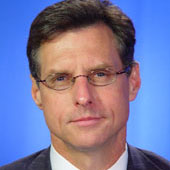Lula Will Be a Tough Act to Follow
Will Brazil’s next president be able to match Lula’s political and economic legacy?
June 16, 2010
Brazil’s constitution allows for only two four-year presidential terms. Lula was first elected president in 2002 and then re-elected in 2006 — and is therefore barred from running again. This could prove to be unfortunate.
Mr. Lula has proven far more adept at running a large economy than many leaders in the developed nations. His economic record speaks for itself. During Lula’s time in office, Brazil’s stock market, the Bovespa, has been among the best performers in the world, posting annualized returns of nearly 30% since the beginning of 2003 through March 31, 2010 (based on local currency terms).
Based in U.S. dollars, Brazil’s stock market has yielded average annual returns in excess of 42% during the same period. Under Lula, the market capitalization of the Bovespa has increased more than ten-fold.
Despite investor concerns about Lula’s background and attendant fears regarding Brazil’s currency, the real has soared against the U.S. dollar over the past few years. Indeed, among the world’s 16 primary currencies, the real was the best-performing currency against the dollar between January 1, 2003 and March 31, 2010, appreciating roughly 100% against the greenback.
Supporting the currency is an average annual economic growth of 3.4% since 2003, accompanied by a noticeable decline in inflation — falling from 8.4% at the end of 2002 to 4.8% at the end of 2009.
Other metrics are equally impressive: Over the past three years, foreign direct investment inflows have averaged $35 billion compared to an annual average of roughly $24 billion over 1995-2002. Exports totaled $60 billion in 2002 but topped $153 billion last year, a 155% cumulative increase. Meanwhile, international reserves — long Brazil's Achilles heel — soared 546% between 2002 ($38 billion) and 2009 ($244 billion).
And, just before Mr. Lula entered office on January 1, 2003, Brazil’s external debt as a percentage of GDP was close to a record high of 48.7%. At present, the nation’s external debt is just 10% of GDP. Against this backdrop, the credit rating agencies have done a near U-turn.
Since Lula assumed power, Moody’s has increased its ratings on Brazil’s debt five notches, while Standard & Poor’s has increased its ratings four notches and Fitch by five. All three credit rating agencies rank Brazil’s debt as investment grade, with Peru and Mexico as the only other nations in Latin America to have achieved the same status.
It is well-known that Brazil is one of the world’s largest exporters of agricultural products, including chicken, orange juice, green coffee, sugar, ethanol, tobacco, soya, maize and pork. Like the United States, Brazil is an agricultural powerhouse.
The nation is also self-sufficient in oil and is poised to emerge as a significant oil producer, with the most recent gigantic offshore oil find described as a “present from God” by President Lula.
The Tupi deepwater oil field contains an estimated five to eight billion barrels of light crude and could very well catapult Brazil into the ranks of the world’s leading oil exporters. Other industries Brazilian global corporate giants have found include mining, mid-range passenger jet manufacturing and beverages.
In terms of size and scale, Brazil is now the second-largest economy in the Western Hemisphere. And based on some estimates, Brazil’s economy could be among the largest in the world by the middle of this century, trailing only the United States, China, India and Japan.
In less than two decades, the economic reforms begun by then-President Fernando Henrique and continued by his predecessor, Lula da Silva, have transformed Brazil’s debt-laden and inflation-prone economy into one of the most dynamic in the world.
I highly doubt Brazil’s next president will stray too far from the policies currently in place. Yes, there are many challenges yet to overcome, but perhaps the biggest hurdle for the next administration will be how to follow in the footsteps of Mr. Lula, for he will be a difficult act to follow.
Editor’s Note: This feature is adapted from an April 20, 2010, U.S. Trust Market Strategy memo titled “Lula Will Be a Tough Act to Follow.” Reprinted with permission of the author.
Takeaways
In terms of size and scale, Brazil is now the second-largest economy in the Western Hemisphere.
Mr. Lula has proven far more adept at running a large economy than many leaders in the developed nations.
Among the world's 16 primary currencies, the real was the best-performing currency against the dollar between January 1, 2003 and March 31, 2010.
Read previous
President Obama, Plug the Hole
June 15, 2010
